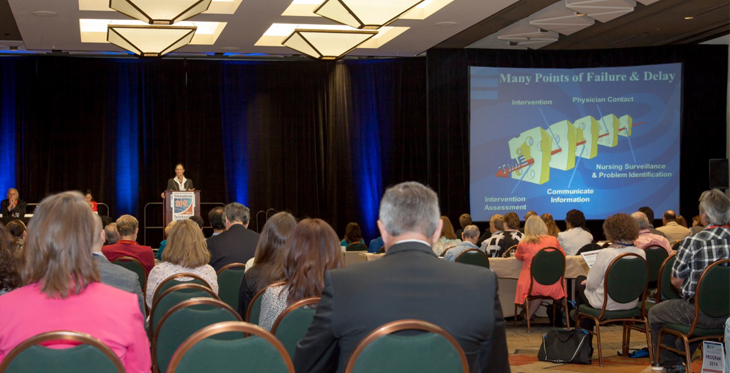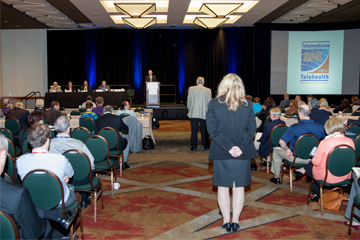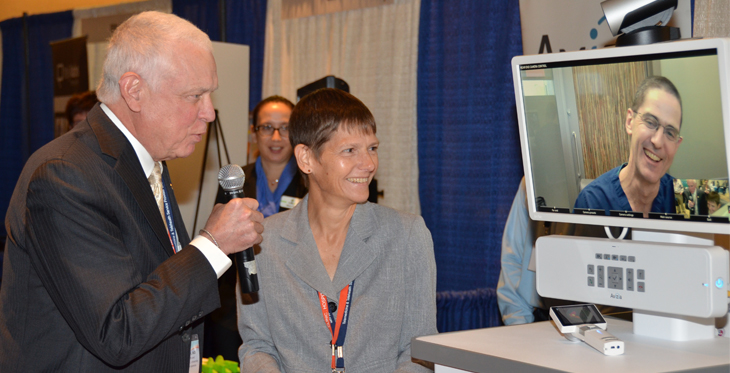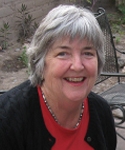As CEO of GlobalMed, a world leader in telemedicine innovation operating in more than 35 countries, Joel Barthelemy goes to a lot of conferences. As in a lot.
He thinks the Telemedicine and Telehealth Service Provider Showcase, held Oct. 6 and 7 in Phoenix, may be the first one he’s ever attended in its entirety.
“The information shared was some of the best I’ve ever encountered,” Mr. Barthelemy said, after attending the conference. “There was little commercialism, and the information imparted to us was very valuable. The feedback I received from clinicians who were there was astounding. They truly felt this was a valuable use of their time.”
The Telemedicine and Telehealth Service Provider Showcase (SPS) was hosted by the Arizona Telemedicine Program (ATP), the Southwest Telehealth Resource Center and the Four Corners Telehealth Consortium.
Ronald S. Weinstein, MD, the founding director of the Arizona Telemedicine Program, and the father of telepathology, said the idea for SPS resulted from “our interest in encouraging the service provider industry to proliferate.
“There are now a number of organizations that are forming independently within the telemedicine arena to address very specific domains,” Dr. Weinstein said. “We decided to do this because we see the need for service providers all the time here in Arizona.”

SPS, as the showcase is called, is thought to have been the first of its kind.
“We have not attended or heard about another meeting dedicated to the service provider community,” said Elizabeth Krupinski, PhD, ATP associate director, director of the Southwest Telehealth Resource Center and co-chair of SPS. She also is a University of Arizona professor of medical imaging, psychology and public health.
“For a first time meeting I think it was a resounding success – the speakers were insightful, they were touching, they were full of good advice,” Dr. Krupinski said.
“Companies are forming now that are not technology companies. They are not selling the infrastructure to do telemedicine. What they are doing is bringing together those people who can actually provide the services, which is what drove telemedicine in the first place.”
Deb LaMarche, associate director, Utah Telehealth Network, moderated two sessions on the first day of SPS.
 "I thought it was a really exciting event," she said. "Most of us who were there have been in telehealth for a very long time, and it was fun to be at something so energizing, looking at new models of care.
"I thought it was a really exciting event," she said. "Most of us who were there have been in telehealth for a very long time, and it was fun to be at something so energizing, looking at new models of care.
"It gave us an opportunity to brainstorm about where telemedicine is headed. It was a unique perspective that we hadn't really seen before. We enjoyed the fact that it was small enough to be interactive with the service providers."
LaMarche was intrigued by the talk by Jim Dickson, CEO of Copper Queen Community Hospital in Bisbee, Ariz., who suggested taking the hub and spokes network model and turning it upside down. "I love that concept," LaMarche said. "It places the emphasis where it needs to be."
The nearly 250 people attended the SPS came from 26 states as well as Toronto, Canada, and Washington, D.C. They included:
- Representatives of 40 hospitals, health-care systems and other health-care providers
- People from other organizations, including academic, government and commercial
- Speakers and moderators
- Representatives of 32 exhibitor and sponsor organizations
- Unaffiliated attendees
- Health-care students
- Staff
“I thought it was really well done, and I think it will be a successful and ongoing meeting in the Southwest,” said Alan Pitt, MD, chief medical officer for the global telemedicine company Avizia. “I was expecting a regional meeting and it ended up being a national meeting. I go to meetings to network with people, and I was pretty impressed with who showed up. I think it was of very good quality.”
 An encore Service Provider Showcase is in the works, Dr. Krupinski said. “People were saying to us, ‘We’ve been looking for a meeting like this. Thank you for providing it.’ So we are in the process of planning 2015 now. We are looking at Phoenix again, and in the fall.”
An encore Service Provider Showcase is in the works, Dr. Krupinski said. “People were saying to us, ‘We’ve been looking for a meeting like this. Thank you for providing it.’ So we are in the process of planning 2015 now. We are looking at Phoenix again, and in the fall.”
Claudia Ulloa, telemedicine and training supervisor at Yuma Regional Medical Center, said she definitely will want to attend the 2015 Service Provider Showcase.
“A lot of it went really quickly,” Ms. Ulloa said, “and I would have liked to ask more questions, and spend more time talking with the presenters. There is so much we can learn from programs in other states, and they from us.
"Telemedicine is very popular within our own community," she added. For example, patients know about Yuma Regional's collaboration with the telestroke program at Mayo Clinic – Phoenix, which connects Mayo stroke specialists with physicians in outlying communities. When Yuma Regional patients arrive at the emergency department with signs of stroke, Ms. Ulloa said, "They say they want the telestroke program. They are glad to know it's here."
Visit ATP's Facebook album for SPS 2014 to view more photos.

